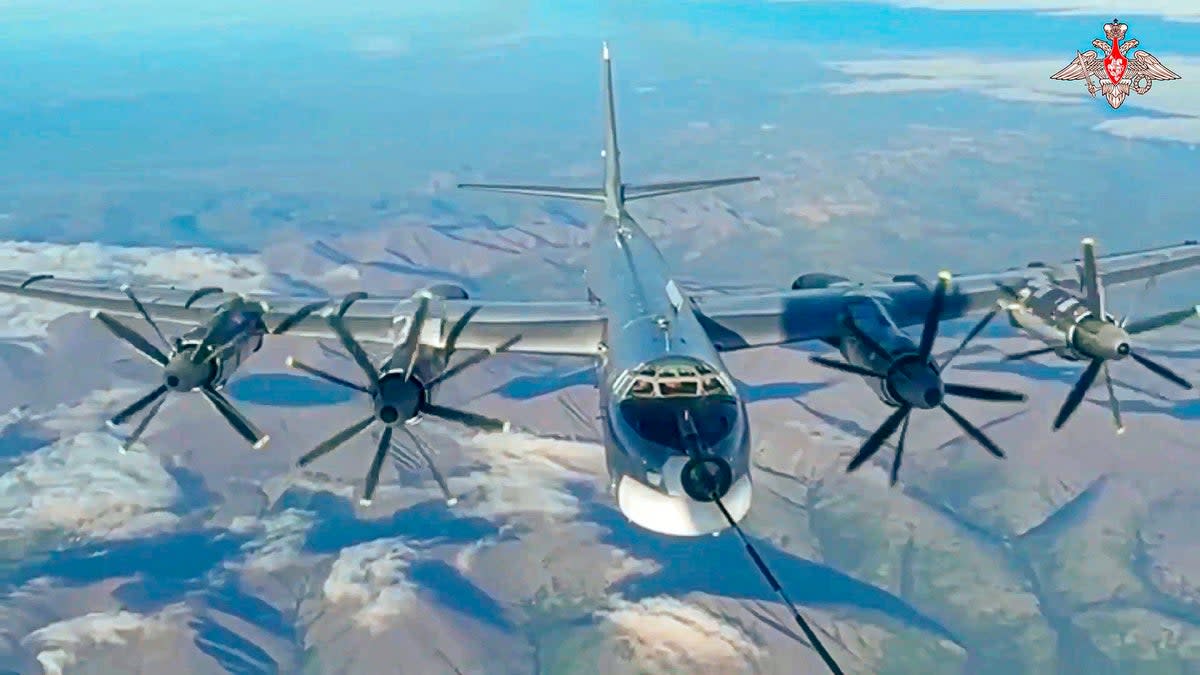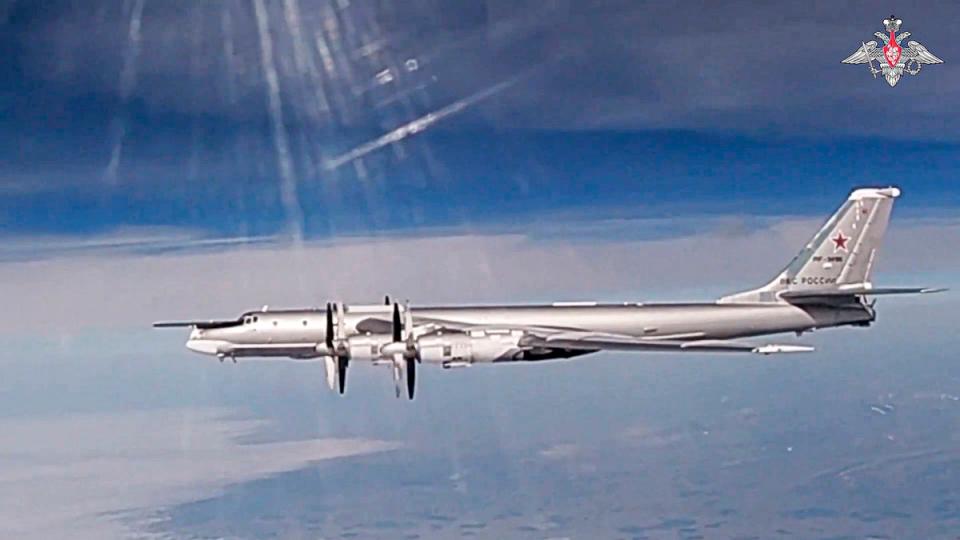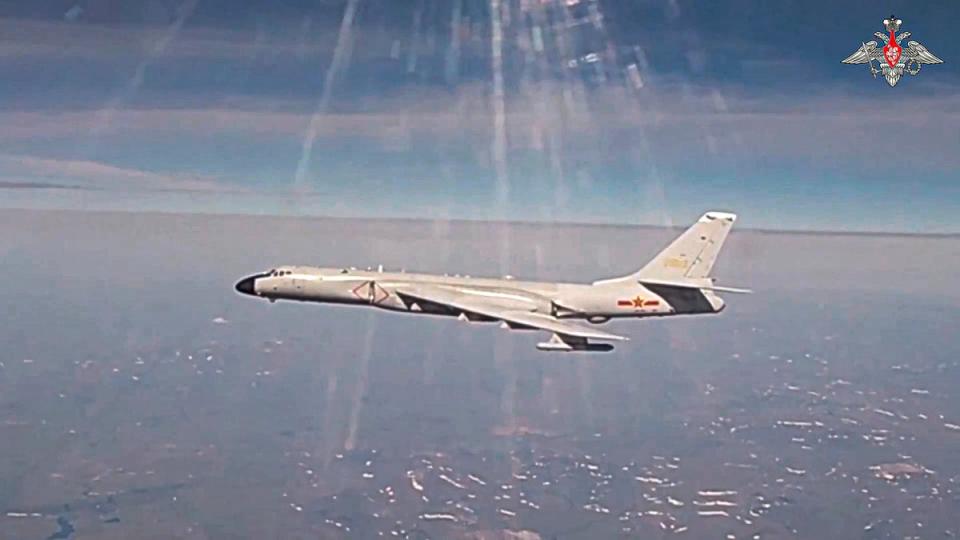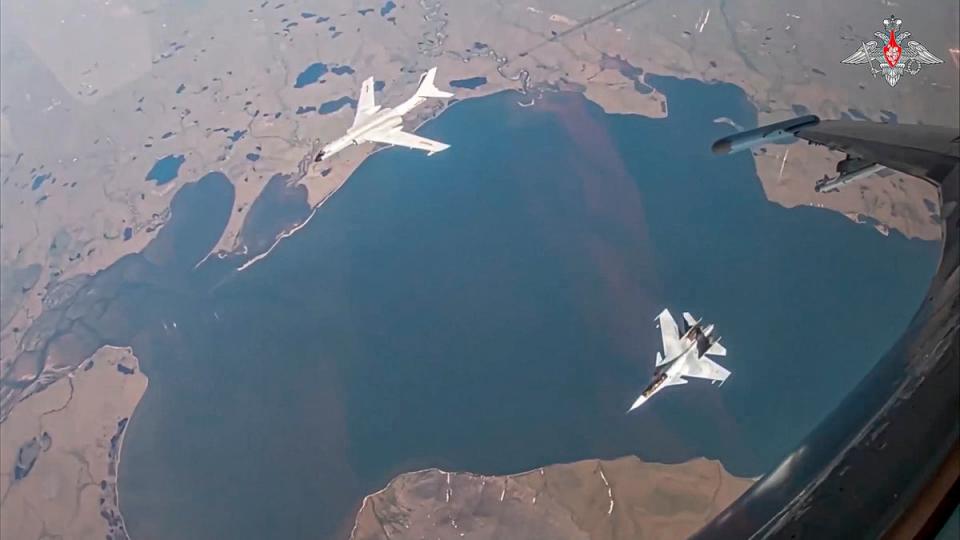US jets intercept Russian and Chinese nuclear-capable bombers off coast of Alaska

US and Canadian fighter jets intercepted Russian and Chinese nuclear-capable bombers after they were detected near Alaska.
The Russian Tu-95MS “Bear” strategic bombers and Chinese Xi’an H-6 bombers were spotted in the Alaska Air Defense Identification Zone (Adiz) – but did not enter US or Canadian airspace, US authorities said.
It comes after Chinese and Belarusian troops joined forces for a joint military drill near its border with Nato member Poland earlier this month.
“The Russian and PRC aircraft remained in international airspace and did not enter American or Canadian sovereign airspace,” the US said.
“This Russian and PRC activity in the Alaska Adiz is not seen as a threat, and Norad will continue to monitor competitor activity near North America and meet presence with presence,” it added.

Moscow claimed Russian and Chinese crews cooperated as part of a “new area of joint operations” for the five-hour flight, but did not violate US or Canadian airspace.
China’s defence ministry said the patrol had “nothing” to do with the conflict in Ukraine or increased tension between the West and Russia.
“The event was held as part of the implementation of the military cooperation plan for 2024 and is not directed against third countries,” Moscow added.
At the start of July, the Chinese military began joint drills in Belarus that were held over 11 days and intended for “further development of Belarusian-Chinese relations”.
China described the drills as “anti-terrorist training” and said the drills were according to “an annual plan and consensus”.

However, Martin Sebena, a lecturer at the University of Hong Kong who specialises in China-Europe relations, said the timing and location of the drills meant they were likely to be seen as further signalling of Chinese support for Russia and its allies in Europe.
Vladimir Putin travelled to China in May for his second visit in just six months, reflecting closer alignment between the two nations amid increasing Western scrutiny and sanctions.
“The China-Russia relationship today is hard-earned, and the two sides need to cherish and nurture it,” Mr Xi told Mr Putin as the leaders met in Beijing.
“China is willing to jointly achieve the development and rejuvenation of our respective countries, and work together to uphold fairness and justice in the world.”
Meanwhile, in Ukraine, Russia launched a huge overnight drone attack across the south and central regions of the country, with Kyiv downing over half of them.

“Last night, the enemy used 38 Shahed-131/136 attack drones, attacking Ukrainian infrastructure in several areas, including the south of Odesa region and central Ukraine,” Mykola Oleshchuk, Ukraine’s air force chief, said.
Oleh Kiper, the Odesa governor, said two people were wounded when drone debris hit a private house in the Izmail district. Authorities in the capital Kyiv and in the Zhytomyr region said those regions had also been targeted.
Three other drones “were lost after crossing the state border with Romania”, he added. Romania’s defence ministry confirmed Russian drone debris was found near the town of Plauru, just across the Danube River.
In a separate attack on Thursday morning, a 51-year-old Ukrainian resident in Kherson was killed by a Russian drone, according to the region’s military governor.
“In the morning, occupying forces dropped explosives from a drone on a 51-year-old man who was outside,” the administration said.

